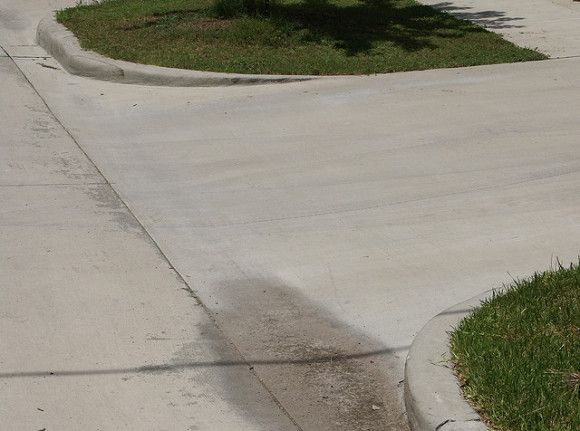Community Board 11 Wants To Crackdown On Curb Cutting

Community Board 11 Chairman Bill Guarinello is looking penalize people who cut curbs to create makeshift driveways in front of their homes. According to a report by the Brooklyn Daily Eagle, Guarinello believes the practice limits parking in residential neighborhoods.
The problem of curb cutting seems to boil down to the issue of lack of enforcement. The Daily Eagle described how people who illegally cut their curbs to create parking spaces have gotten away with the practice:
Homeowners are required to obtain a permit from the city’s Department of Buildings (DOB) before installing the curb cut.
But not every permit request is granted by DOB. For example, a curb cut cannot go in too close to a fire hydrant, a tree, or a utility pole and a homeowner cannot install a curb cut if the house is located close to an intersection where a car coming in and out of a driveway would interfere with oncoming traffic.
“If you have been denied a curb cut, there is a reason,” said Community Board 11 District Manager Marnee Elias-Pavia. “It might be because there isn’t enough clearance from the house to the property line,” she told the Eagle.
The problem, according to Guarinello and Elias-Pavia, is that many homeowners ignore the city’s wishes and put in the curb cut anyway. Those homeowners found to be in violation are subject to fines of $2,500. The violations are issued by DOB.
Why would a homeowner put in a curb cut when he knows it’s illegal?
“They do it to create car ports for themselves,” Guarinello said. “And people don’t think the violation is that big a deal,” he said.
Often, the violation remains on the books with no further penalty, until the homeowner is selling the house and it comes up during the title search. But that could be years down the road. In the meantime, the illegal curb cut stays.
“The result is that you have a car parked in an area that’s not a real driveway and it just looks bad. I think it’s cutting the quality of life of the neighborhood,” Guarinello said.
To combat the problem, Guarinello is looking to create a task force that would treat curb cutting the same way the city treats cracks and holes on people’s sidewalks:
“The same way the city fixes a sidewalk that’s in violation and then sends a bill to the homeowner, the city should fix the curb and then bill the homeowner,” he told the Brooklyn Daily Eagle.
Guarinello recently announced that he is organizing a task force to look into solutions to the curb cut problem and said his idea to step up enforcement would be discussed by the new panel. He has reached out to leaders of Community Board 10 in Bay Ridge to join the task force. Both Bensonhurst and Bay Ridge have seen an increase in the number of illegal curb cuts over the years, he said.
“Here’s my dilemma. The city goes after homeowners for a crack in the sidewalk, why not curb cuts?” he asked.
In defense, the Department of Transportation (DOT) noted that they already actively deal with the problem of illegal curb cutting.
“As part of routine sidewalk inspections, DOT will remove curb cuts that are determined to be unauthorirzed,” DOT spokesman Nicholas Mousquera told the Daily Eagle.
I’m divided on this issue, (no pun intended). While I don’t think people should illegally cut their curbs, especially after going through the nightmare of trying to move your car on street cleaning days, I do have a bit of sympathy for people who do. After all, there is probably no more powerful feeling in New York City then gliding into your own private personal parking space. It isn’t hard to imagine a homeowner pushed to the limit of futilely trying to park their car every night in their neighborhood for years, and then one day just making their own parking space on their property.
Of course, if there were fewer commercial vehicles taking up residential street parking, or the City increased parking capacity somehow, we could eliminate the root cause that drives homeowners to make such illegal modifications.




